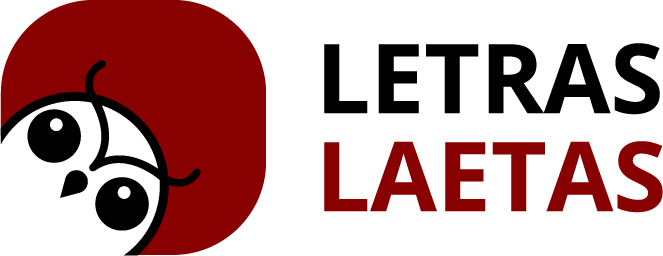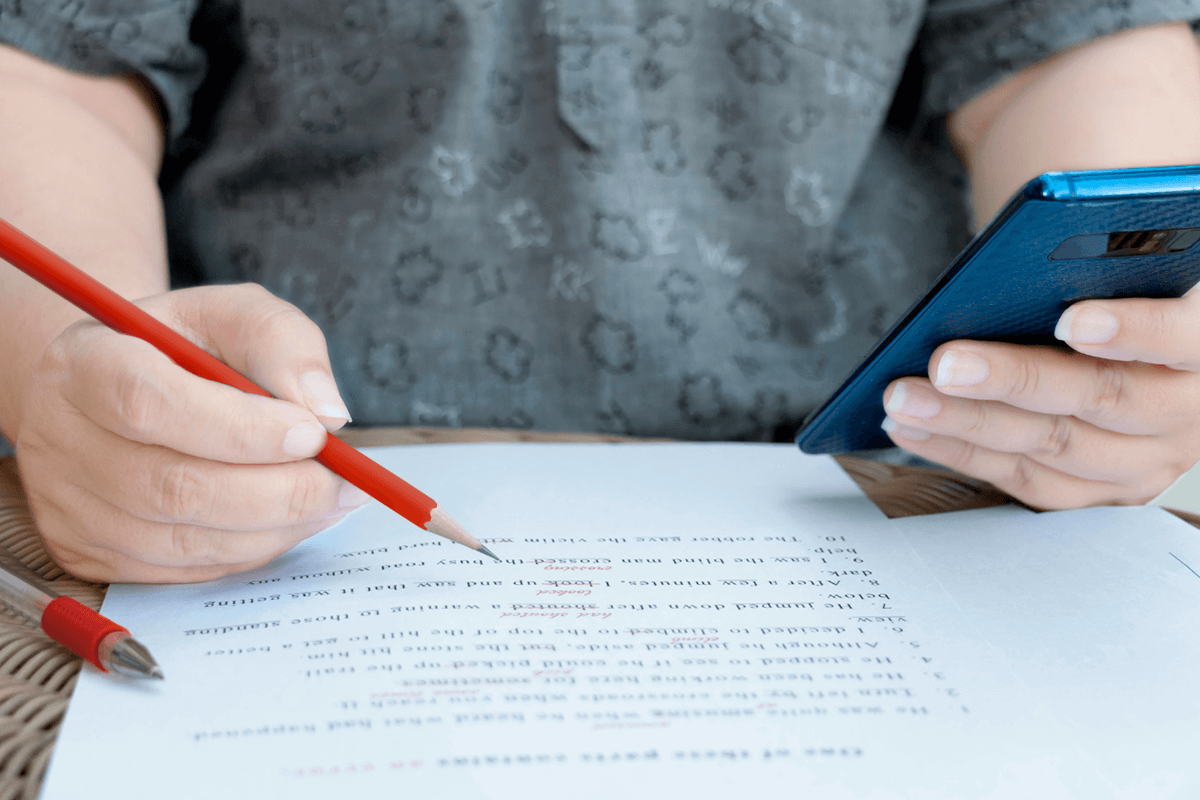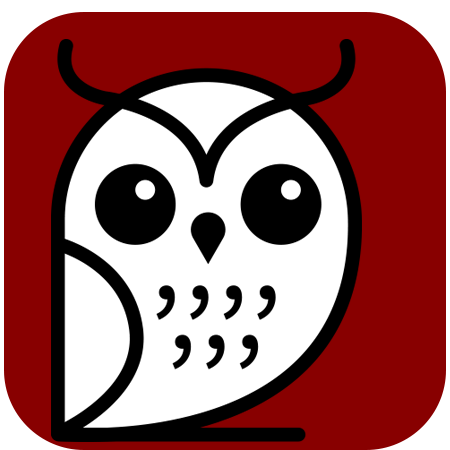Style correction or proofreading is the process of carefully reviewing a document and making sure it is written correctly. That is, make sure that grammatical issues such as spelling, punctuation, syntax, and agreement in a manuscript are adequate so that future readers can understand it. Style correctors are the people in charge of doing this revision. In this post I will talk more about:
- What is proofreading
- Where the style correction is needed
- Proofreader competencies
- Submission of an original
- Grammatical considerations
- The galley correction
- Conclusions
What is and what is not proofreading?
Many people mistakenly think that proofreading is about changing an author’s style. They have this idea that after passing through the hands of the reviewer, their original will lose its essence. These people have confused what the personal style of a writer means with the style that is required for certain publishing houses, magazines or media to publish a book or document.
On the one hand, the proofreader corrects grammatical and spelling errors in the document. Some of the most frequent errors are:
- The use of capital letters where they should not be.
- The use of accent marks in Spanish words
- Things the author missed, like changing an n to an s.
- Confusing paragraphs whose meaning contains ambiguities.
- Redundancies and obviousness.
- Coherence between titles, subtitles and texts.
What does a proofreader do? This person reviews the style to make sure it compels the criteria of the media where the writing will be published. He doesn’t care about the author’s style (only corrects its errors). Take, for example, academic journals. While some will opt for an APA (American Psychological Association) citation format, others may prefer the MLA (Modern Language Association). A copyeditor will make sure the citation is correct and unified.
The media have various editorial guidelines, that is, guides on the use of language and writing, length, among other characteristics that their texts must meet to be published. For example, some media outlets opt for inclusive language to show a political stance; others continue to use language with a generic masculine. Having these guidelines makes the publications they make uniform and recognizable by their style, despite the fact that several authors intervene in their creation. The copyeditor is more interested in these guidelines than in changing the way an author writes, unless what he has written is ambiguous or difficult to understand.
Where is copyediting necessary?
In an ideal world, proofreading is necessary for any text that will be published and intended for a reader. In reality, the rise of the Internet has allowed self-application, which is advantageous in the sense that the creation of communication media has been democratized. Some examples of these media and content are blogs, social networks, memes and even books. Before, people who published a book did so only through publishing houses; now there are platforms where ebooks can be uploaded and sold without the intervention of third parties.
One of the consequences of the above is that the texts that are published on the web have stopped going through a quality filter, that is, by editors or proofreaders who take care of the grammar of the manuscript. Other more specialized media continue to pay attention to these details, as well as publishing houses.
In general terms, the people who are most aware of the importance of proofreading are linked to the academic or literary environment, as well as to companies of all kinds that publish, along with their products, instructions, guarantees, among others. Thus, the documents that are corrected the most are:
- In the academic environment: Theses, journal articles, research, case studies, study programs.
- In the corporate environment: Instructions, manuals, guarantees, reports, blog articles, brochures.
- In the marketing environment: advertisements, advertising copy, billboards.
- In the literary environment: Poems, novels, short stories, essays, film scripts, dramatic works.
Proofreader competencies
The proofreader must be a competent speaker in the language being proofread. Preferably, but not necessarily, it should be his mother tongue. Style editing is learned by reading and studying the grammar of a language, so style editors are normally people who are passionate about the linguistics and literature of the language they are editing. This makes them develop a higher sensitivity that gives them decision criteria when making changes to an original.
The study of literature is independent of the study of the grammar of a language. However, it is in literary texts where language finds a way of development that can break the rules. In this type of text you can find guidelines of what will be the norm in the future.
In addition to being a person with a taste for literature, the proofreader must have knowledge of the grammatical rules of their language, in accordance with the bodies that are responsible for regulating its use. Languages such as Spanish have institutions, such as the Royal Academy of the Spanish Language, that watch over the use of the language and issue recommendations on its use. If the copyeditor works for a particular media outlet, he must know in detail and adhere to the editorial guidelines issued by his organization.
Submission of an original
We call the author’s manuscript original. They are usually typed sheets through digital word processors. Since a document can vary in number of pages depending on the size of the font, its line spacing, among other factors, style correctors usually measure documents by number of words or by number of characters.
A page is made up of 1,600 characters with spaces included. Publishers, magazines and media that request texts with a required length, measure the pages with these same criteria. They can vary from one medium to another, but in essence, they measure a text by number of words or characters.
When submitting an original to a publisher or to a proofreader who will make the appropriate adjustments, the writer should be aware of how to submit their manuscript. Some aspects to consider are:
- Size and type of paper on which it must be delivered, in case it must be printed. For example, letter size, legal size, etc.
- In the case of digital submissions, the format in which your original is required. For example, pdf or editable doc file.
- Required line spacing and font punctuation.
- The chapters of the work must begin on a separate page.
- Illustrations, tables and diagrams must be ordered and numbered.
- The parts of the work must be indicated in an index.
- It should be written in upper and lower case letters, limiting capital letters to established uses.
Grammatical considerations
Languages can be studied at various levels that start from the sound through which words are formed, to their meaning. In a rigorous sense, we could say that the highest level of grammar analysis is the sentence. The study of how these sentences constitute a larger text corresponds to the area of discourse analysis. The levels with which a language has traditionally been studied are:
- Phonetic. Study the phones or different sounds, for example, the sound of vowels in Spanish. To unify the study of phones, linguists have created the International Phonetic Alphabet , a scheme that represents all the sounds we have identified in the world’s known languages.
- Phonological. Analyzes phonemes, which by themselves are meaningless units of language. It is the study of sounds, but depending on whether their opposition generates a change in meaning. For example, in Spanish we can say that /r/ and /l/ represent two different phonemes because in words like ‘caro’ and ‘calo’ they generate a change of meaning; then we say that /r/ and /l/ are two different phonemes. In contrast, in other languages, such as Chinese, these two sounds would form the same phoneme, since their opposition does not generate a change in meaning. For this reason, it is very common that when we hear a person whose first language is Chinese, they exchange these two sounds, because in their phonological system, they sound the same.
- Morphological. Examines morphemes, that is, the parts that make up words and that already have some meaning. For example, in the Spanish word ‘casa’ we find the root of the word, the morpheme cas-, which already has the meaning of dwelling. To this morpheme we add the ending -a, whose meaning is that the word is feminine; if we also add an -s, we give the number information: ‘casas’ – noun, feminine, plural.
- Lexicon. Study the words. When a person has knowledge of a large number of words, he is said to have a large lexicon. In style correction this is necessary to avoid the repetition of words that can generate cacophony. In these cases, we prefer to use synonyms so as not to repeat the same term dozens of times.
- Syntactic. It refers to the order in which we arrange words and their function within sentences. Syntax is a term that comes from the Greek “συνταξις”. It used to be used to designate how the Greek military should be formed. This is used as an analogy for when we study sentences. In Spanish, the most common syntax consists of Subject (made up of one or more nouns, or a pronoun + Predicate (whose nucleus is a verb and, depending on the type of verb, can contain a direct object or an indirect object). As an example: { María (Subject) + [come (nucleus of the predicate, it is a verb) pastel (direct object)] (Predicate) }.
- Semantic. Finally, another level of analysis of language is semantic, semantics studies the meaning of what we communicate. For many linguists, this level of language analysis is foreign to grammar, since traditionally the highest unit of study in this discipline is the sentence.
- Discourse analysis. As I already mentioned, there is this other discipline that studies how we order sentences to create meaning and communicate some idea through a discourse.
The style corrector analyzes the manuscript, making sure that it is correct according to the levels of analysis of the language mentioned above. There is one more aspect that the proofreader must consider and that is not properly found within grammatical studies.
The proofreader also makes sure that punctuation, exclamation, question marks, hyphens, among others, are correctly applied. For example, dialogues are represented by a dash or long dash. A space must follow a comma, semicolon, or full stop; but before them, it is not necessary to place a space with respect to the letter that precedes.
The correction of galleys
After the first reading, there comes a second one. In this second lecture, the style checker revises the typography. It can be carried out by the copyeditor himself or by another editor.
Some publishing houses prefer that two different people are involved in these two types of proofreading. With this they ensure that whoever makes the second reading can see errors that the first corrector overlooked and in which it would be difficult for him to repair because he was “tainted” by the text.
The proofreader performs a second check to ensure that the rules for hyphenation have been met; the figures, numerals and formulas are unified to the same criteria; chapters start on a different page and there are no whole pages with a single line of text. When they find an error, they mark it in the margin of the document with a callout.
In conclusion…
- The copy editors are in charge of revising an original, and making modifications so that it is more readable and when it is published, the readers can clearly understand the content.
- The galley proofreaders do a second revision, once the typeface has been applied.
- Academicians, students, businesses, and corporations produce documents that should, ideally, be proofread before being published.
- It is false that the proofreader modifies the author’s writing style, the style that interests him is that of the medium where the document will be published.
- Proofreaders are people who are passionate about the language and literatures of the language they are proofreading; In addition, they must have professional studies in the grammar of the languages they work with.
If you are interested in a style correction or want to know more about this topic, do not hesitate at contact us.


